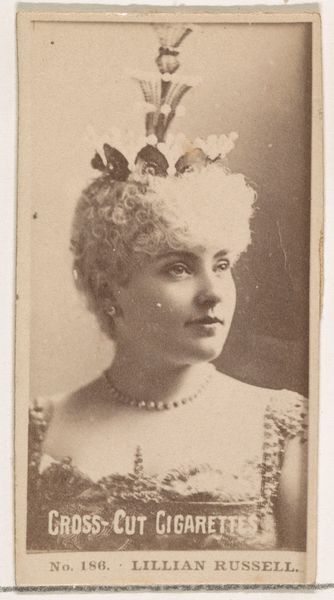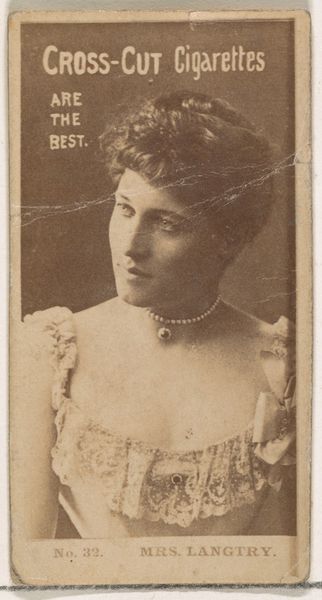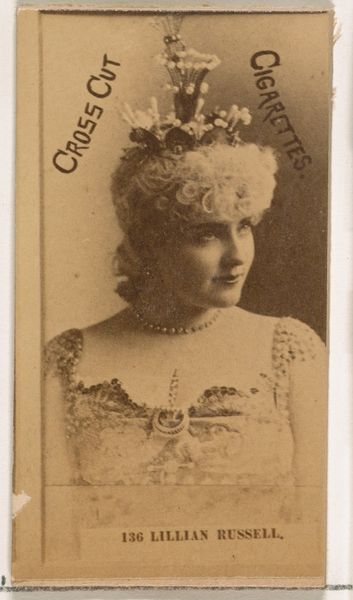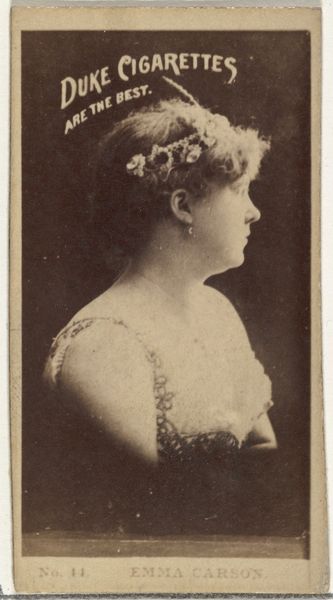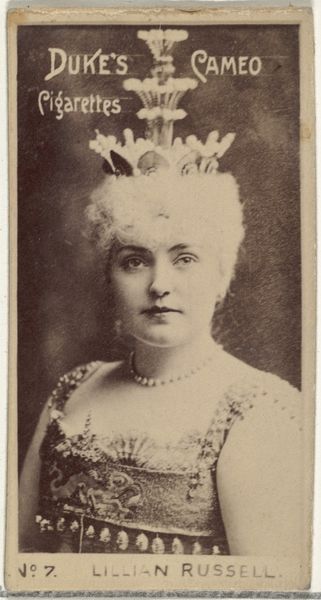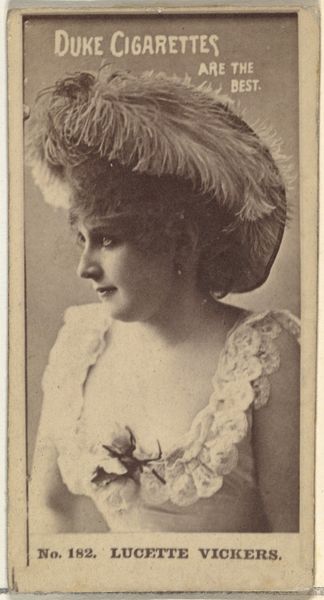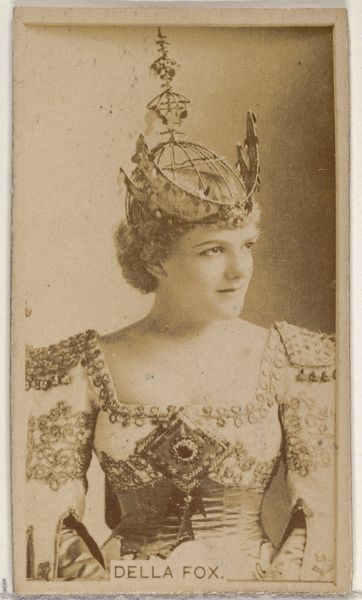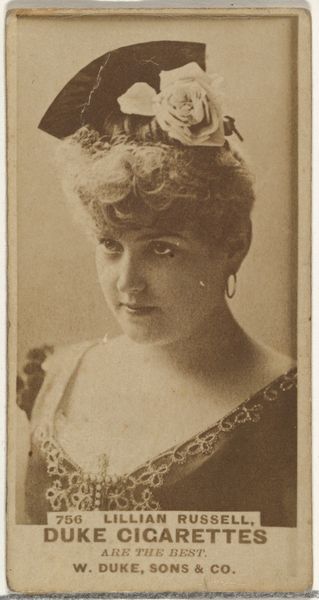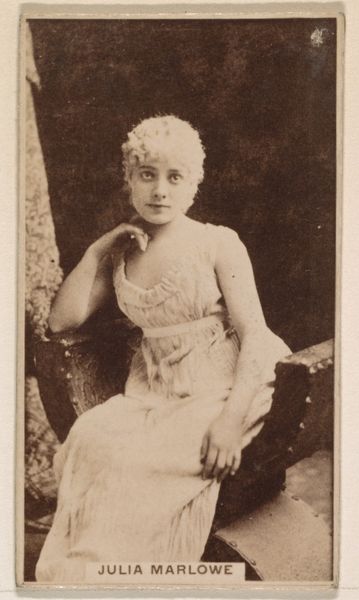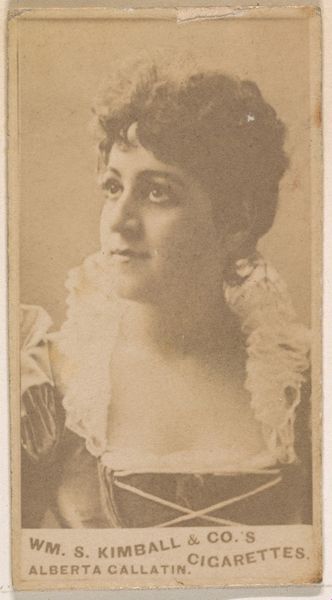
Card Number 109, Lillian Russell, from the Actors and Actresses series (N145-1) issued by Duke Sons & Co. to promote Cross Cut Cigarettes 1880s
0:00
0:00
drawing, print, photography, gelatin-silver-print
#
portrait
#
drawing
# print
#
impressionism
#
photography
#
gelatin-silver-print
#
19th century
Dimensions: Sheet: 2 1/2 × 1 3/8 in. (6.4 × 3.5 cm)
Copyright: Public Domain
Curator: Here we have "Card Number 109, Lillian Russell," a print dating to the 1880s and part of the Actors and Actresses series produced by Duke Sons & Co. as a promotional item for Cross Cut Cigarettes. Editor: It's a curious artifact. At first glance, the sepia tone lends a nostalgic charm, but there’s something inherently commercial about its nature, meant to entice smokers. Curator: Exactly. These cards were inserted into cigarette packs, designed to cultivate brand loyalty, particularly appealing to a rising consumer culture and the cult of celebrity. Lillian Russell, a renowned stage actress and singer, became a very popular pin-up, especially during the late 19th century. Editor: I see it more like the commodification of the female image—Russell, reduced to a token within a product marketed to men. Her fame is essentially being used to sell cigarettes; there is very little autonomy here for Russell. She appears as object rather than subject, if that makes sense. Curator: To understand that point, though, we must understand that imagery of celebrities held considerable cultural currency during this period of industrialization and the rise of mass media, these cards created an easily accessible medium for public identification and adoration. It could be considered empowering, that someone could gain recognition on something besides aristocratic background. Editor: Maybe... and yet, the history of advertising tells a far more complex and troubling story about gendered exploitation. Even her pearl necklace seems designed to emphasize not just her beauty, but her availability. Curator: Certainly. The distribution of the portraits of these actresses via mass marketing created visibility and reinforced stereotypes of female beauty and the "ideal woman." Editor: Indeed. Ultimately, such pieces serve as valuable historical evidence for understanding both the evolving representation of women, and the birth of celebrity culture during a period of significant socio-economic transformation. The portrait offers a unique window into this nexus. Curator: That convergence of popular appeal and commercial imperative makes the image not merely an advertisement, but an intricate historical document. Editor: I agree. And that makes it much more than just a pretty face from the past.
Comments
No comments
Be the first to comment and join the conversation on the ultimate creative platform.
